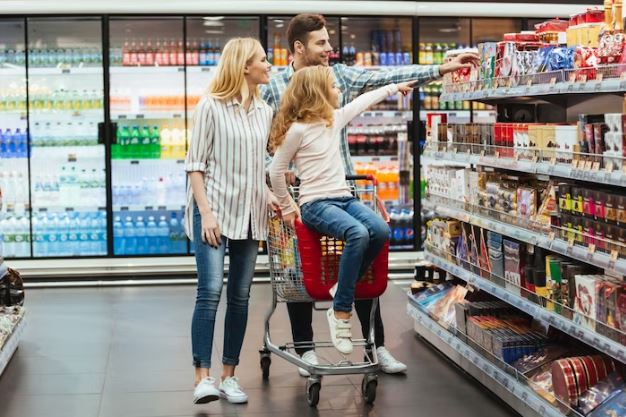New Delhi: Major FMCG companies feel the demand slump has bottomed out and there are green shoots of recovery in the rural markets, which has been under stress since the last few quarters.
With abating commodity price pressures, firms such as HUL, Godrej Consumer Products Ltd (GCPL), Dabur, Marico and Emami expect a gradual recovery in consumption going forward and are increasing upfront marketing investments in advertising and promotion (A&P).
In the third quarter ended December 31, 2022, the companies reported growth in the urban markets. Modern trade channels and e-commerce also posted growth. But FMCG sales from traditional trade channels such as kirana stores were flat.
Rural markets, which contribute around 35 per cent of FMCG industry sales, were still sluggish in Q3.
However, the companies said they are witnessing signs of improvement on the back of encouraging winter crop sowing, indications of higher farm income and continued government stimulus.
Home-grown firm Dabur said the impact of inflationary pressures was more pronounced in the rural markets as marked downtrading and shift to more affordable and smaller packs led to rural growth lagging urban markets for the second quarter in a row for the company.
“However, we believe that this demand slump in rural has bottomed out as we are now seeing some green shoots of revival in demand in the hinterland. We are hopeful of rural demand reporting a smart recovery on the back of a record farm output and increased government spending,” Dabur India Chief Executive Officer Mohit Malhotra said.
Urban growth will be driven by softening of inflation and buoyancy in new-age channels like modern trade and e-commerce, he added.
Dabur had reported a decline of 5.51 per cent in its consolidated net profit to Rs 476.55 crore, while its revenue from operations rose 3.44 per cent to Rs 3,043.17 crore in the October-December quarter.
It had spent Rs 146.5 crore on advertisement and publicity, which was 6.4 per cent of its revenue.
Marico Ltd, which owns brands such as Saffola and Parachute, reported a 5.04 per cent increase in consolidated net profit at Rs 333 crore. Its revenue from operations was at Rs 2,470 crore, up 2.61 per cent.
“Prominent green shoots in rural are eagerly awaited as an encouraging winter crop-sowing season, indications of higher farm income and continued government stimulus bode well. We expect to maintain an improving growth trend in the quarters ahead,” it said.
Marico’s A&P spending was at 8.9 per cent of sales, up 3 per cent sequentially.
“As the operating environment is expected to evolve favourably, we will aim to maintain an upward trajectory across growth parameters in the quarters ahead through consistent investment in our brands and focus on execution,” said Marico MD and CEO Saugata Gupta.
Expressing similar views, GCPL Managing Director and CEO Sudhir Sitapati said: “With commodity pressures abating, we expect a gradual recovery in consumption, expansion in gross margins, upfront marketing investments with a significant focus on reducing controllable costs and improvement in profitability in the coming quarters.”
The Godrej group’s FMCG arm, which reported a 3.55 per cent rise in consolidated profit after tax at Rs 546.34 crore and total revenue from operations at Rs 3,598.92 crore, said it will continue to have a healthy balance sheet and be net cash positive.
According to Emami, during the third quarter, demand patterns for the FMCG sector remained sluggish, with rural markets experiencing continued demand pressure.
“Further, a warmer winter season across the country impacted sales even more,” it said.
The Kolkata-headquartered firm spent Rs 153 crore on A&P.
Last week, a report released by data analytics firm NielsenIQ said the FMCG industry witnessed a consumption slowdown in the December quarter, with an overall “negative” volume growth, as consumers continue to reel under inflationary pressure.
The rural markets declined 2.8 per cent, registering the sixth consecutive quarter with negative volume growth, while the urban market maintained stable positive growth of 1.6 per cent, it said.
Leading FMCG firm Hindustan Unilever (HUL) said it is “cautiously optimistic” in the near term and believes that the worst of inflation is behind us.
“This should aid in a gradual recovery of consumer demand. We remain focused on managing our business with agility and continue growing our consumer franchise whilst maintaining margins in a healthy range.
“We stay confident of the medium to the long-term potential of the Indian FMCG sector and HUL’s ability to deliver consistent, competitive, profitable and responsible growth,” HUL CEO and Managing Director Sanjiv Mehta said.
HUL had reported a 7.9 per cent increase in its consolidated net profit at Rs 2,481 crore for the third quarter. Its total income rose 16.35 per cent to Rs 15,707 crore.
According to the company, the rural market has shown some signs of improvement, with December quarter expansion higher than the growth in the September quarter and the last 12 months.
ITC, which reported a 18.28 per cent increase in its core FMCG business in Q3 at Rs 4,848.95 crore, said economic activity in India continued to gather momentum with sequential moderation in commodity inflation, even as core inflation remained elevated.
“Rural demand continued to be relatively subdued while improving sequentially. Consumer sentiments improved during the quarter but remained below pre-pandemic levels,” ITC said in its earning statement.
Nuvama Group Executive Director, Institutional Equities, Abneesh Roy said margins “will improve in Q4 and F24 will be a good year in terms of margins.”
On the recovery of the rural market, he said: “I will still be cautious. FY24 is where recovery will happen.”
PTI

